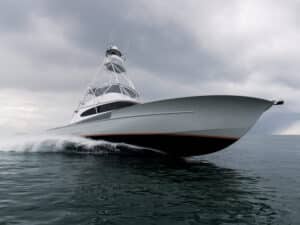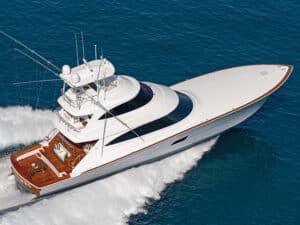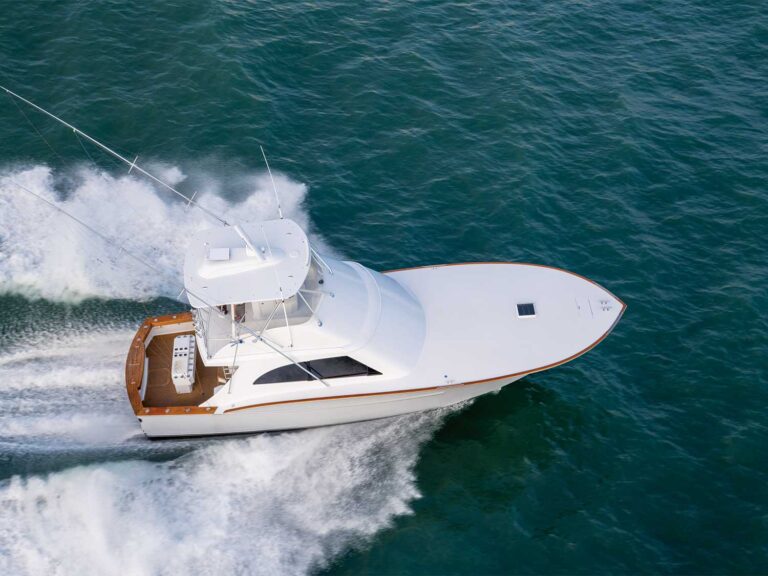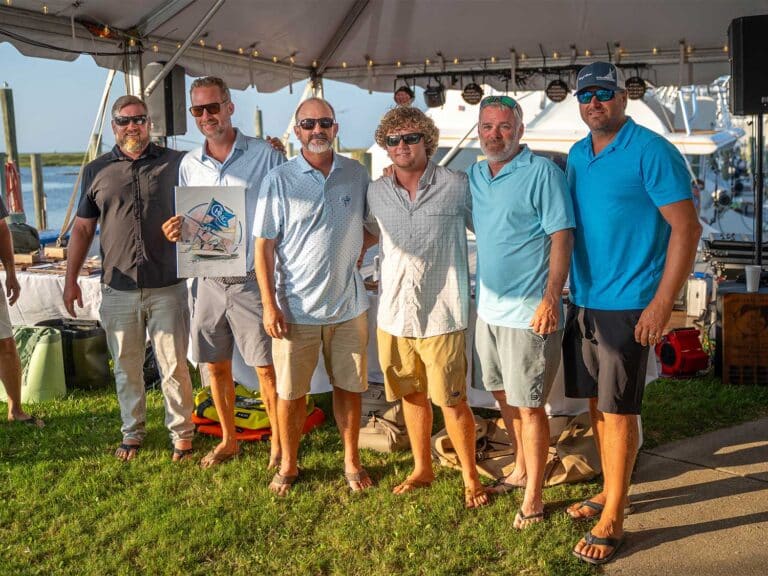
Test
We at Marlin once said that if there’s a perfect boat out there for the pursuit of billfish, it’s probably going to be somewhere around 55 feet long.
Why? That length represents the ideal compromise of fish-fighting maneuverability, wide-beam accommodations and far-reaching range. No, you won’t find a 55-footer that’s the world’s best at any one of those criteria, but you do stand a real good chance of finding a complete package that does a good job of meeting most of your needs.
Maybe that’s why this size range has seen such a high level of new product development over the past two years, a period in which three major production builders have all introduced new 55- or 56-foot hulls.
“Proportionally, a 55-footer just lays out very well,” says Doug Finney of Ocean Yachts, which has already sold 25 units of the 56-footer it introduced less than a year ago. “It’s got the three staterooms that people want, and with a 55-footer, you hit a price range and size range where two people feel comfortable taking it out by themselves with just a single mate,” he says. “Once you get over 55 or 56 feet, depending on the size of the boat, the layout and the way it handles, you’re crossing a threshold there. It’s right at that upper edge where you get the maximum amount of room and accommodation without having to have a full-time captain.”
Finney says that like those of the older Ocean 55, owners of the new 56 are proving to be a loyal bunch. “We’ve just had a hard time moving people out of the boat,” he says. “I’ve seen a number of people who could have afforded to buy a bigger boat but elected to buy the 56 because it’s a boat they could handle themselves.”
Jerry Soderholm of Bertram Yacht agrees with Finney’s assessment that a 55-footer is ideal for a small crew but also points to other ingredients in this recipe for success: a 17-foot beam that fits in most marinas, a huge fishing cockpit and an engine room big enough to hold the muscle being pumped out by engine manufacturers today.
Soderholm also admits that there might be a more pragmatic reason for the 55’s success. “It may just be the dollar,” he says. “Most of these boats come in around $1.5 million. To move up to a 60 represents a quantum leap dollar-wise.”
Whatever the reasons, it’s hard to argue with the conclusions. Ocean, Hatteras, Bertram and Viking have for decades paid the bills with boats in this size range, even when the bigger boats are getting the headlines.
Custom builders also have found great success here, proving that for some, at least, dollars are not the primary concern. Whiticar’s 55-foot Harry II is among its most celebrated hulls ever. Rybovich’s 55-foot model has proved very successful over the past several years. Egg Harbor just reentered the marketplace under its new ownership, which picked a 53 (with a 55-foot LOA) as the company’s first new hull.
These custom boats probably represent the closest thing to perfection, because they can be fashioned to fit the dreams of the owner. However, such customization makes for difficult comparisons. So for the sake of fair evaluation, we offer the following analysis of the production boats available today in this “perfect” size range.







